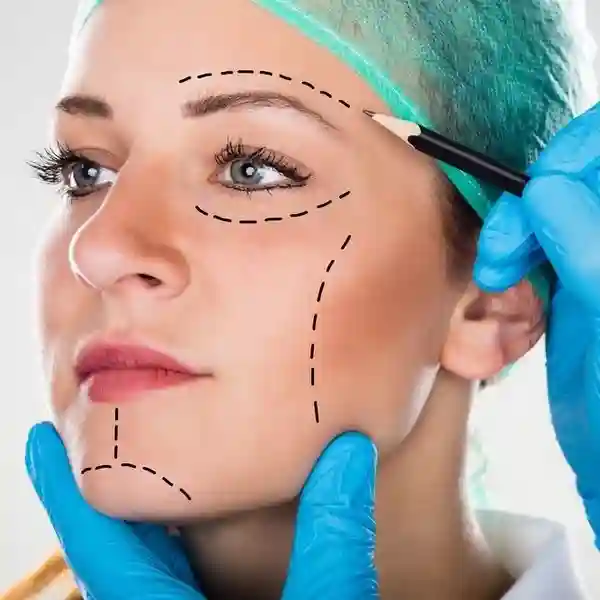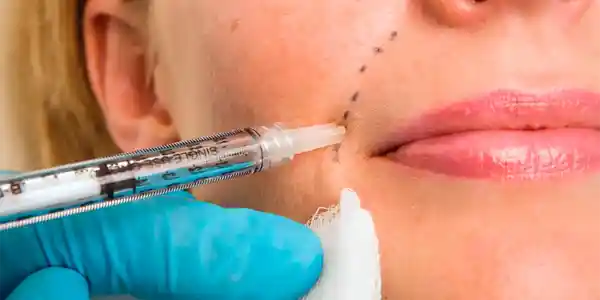Introduction:
Platelet-rich plasma (PRP), fat grafting, and dermal fillers made from natural sources are examples of biologic tissue fillers that are becoming attractive choices for volume enhancement and facial rejuvenation. We explore the complexities of biologic tissue fillers in this extensive guide, contrasting their advantages, variations, dangers, chemical makeup, producers, shelf life, trade names, and global equivalents.
Technical and practical methods of harvesting each:
Fat Grafting:

Procedure:

Fat grafting involves harvesting fat from one part of the body, typically the abdomen or thighs, through liposuction. The harvested fat is processed to remove impurities and then injected into the desired area, such as the face or buttocks, to add volume and contour.
Why it Works:
Fat grafting works by using the body’s own fat cells to add volume to the treated area. The transferred fat cells integrate with the surrounding tissues, providing long-lasting results. Fat grafting also has the added benefit of contouring the area where the fat is harvested.
Benefits:
Fat grafting offers natural-looking results, as the transferred fat blends seamlessly with the surrounding tissues. It also provides long-lasting results, as the transferred fat cells can survive in the new location. Additionally, fat grafting avoids the use of synthetic materials, reducing the risk of allergic reactions or rejection.

Why it is better than Typical Tissue Fillers:
Fat grafting is often preferred over typical tissue fillers because it uses the patient’s own fat cells, reducing the risk of adverse reactions. The results of fat grafting are also more natural-looking and longer-lasting compared to synthetic fillers.
Comparison with Generic Synthetic Temporary Fillers and Surgical Implants:
Durability:
Fat grafting provides long-lasting results, with many patients experiencing permanent volume enhancement. In contrast, synthetic fillers and surgical implants may require regular touch-ups or replacements.
Risk of Adverse Reactions:
Fat grafting has a lower risk of adverse reactions compared to synthetic fillers and surgical implants, as it uses the patient’s own tissues.
Cost:
While fat grafting may be more costly upfront due to the liposuction procedure, it can be more cost-effective in the long run, as it often provides permanent results.
Platelet-Rich Plasma (PRP):
Procedure:
PRP is harvested from the patient’s own blood, which is drawn and processed to isolate the platelet-rich plasma. The concentrated PRP is then injected into the desired area, such as the face or scalp, to stimulate cell regeneration and collagen production.
Why it Works:
PRP works by harnessing the body’s natural healing process. The growth factors released by the platelets stimulate cell growth and repair, leading to improved skin texture and tone. PRP can also promote hair growth in patients with hair loss.
Benefits:
PRP offers several benefits, including promoting collagen production, improving skin texture, and reducing the appearance of fine lines and wrinkles. It can also be used to stimulate hair growth in patients with hair loss.

Why it is Better than Typical Tissue Fillers:
PRP is often preferred over typical tissue fillers because it is a natural treatment that uses the patient’s own blood, reducing the risk of adverse reactions. PRP also has minimal downtime and can be used in conjunction with other treatments for enhanced results.
Comparison with Generic Synthetic Temporary Fillers and Surgical Implants:
Durability:
PRP results are temporary and may require regular maintenance treatments to sustain. In contrast, synthetic fillers and surgical implants may provide longer-lasting results.
Risk of Adverse Reactions:
PRP has a lower risk of adverse reactions compared to synthetic fillers and surgical implants, as it uses the patient’s own blood.
Cost:
PRP treatments may be more cost-effective than synthetic fillers and surgical implants in the long run, as they may require fewer treatments to maintain results.
Dermal Fillers:
Procedure:
Dermal fillers are typically made from synthetic or natural substances and are injected into the skin to add volume and reduce the appearance of wrinkles and fine lines.
Why it Works:
Dermal fillers work by providing immediate volume to the skin, which helps to smooth out wrinkles and fine lines. Some fillers also stimulate collagen production, which can improve skin texture and elasticity over time.
Benefits:
Dermal fillers offer several benefits, including immediate results, minimal downtime, and the ability to treat a variety of cosmetic concerns, such as wrinkles, fine lines, and volume loss.

Why it is Better than Typical Tissue Fillers:
Dermal fillers are often preferred over typical tissue fillers because they provide immediate results and can be customized to meet the patient’s specific needs. They also have a lower risk of allergic reactions or rejection compared to some natural fillers.
Comparison with Generic Synthetic Temporary Fillers and Surgical Implants:
Durability:
Dermal fillers typically last between 6 months to 2 years, depending on the type of filler used. In contrast, synthetic fillers and surgical implants may provide longer-lasting results.
Risk of Adverse Reactions:
Dermal fillers have a lower risk of adverse reactions compared to synthetic fillers and surgical implants, as they are often biocompatible.
Cost:
Dermal fillers may be more cost-effective than synthetic fillers and surgical implants, as they require fewer treatments to maintain results.
Collagen Fillers:
Procedure:
Collagen fillers are typically derived from bovine collagen or human collagen and are injected into the skin to add volume and reduce the appearance of wrinkles and fine lines.
Why it Works:
Collagen fillers work by providing immediate volume to the skin, which helps to smooth out wrinkles and fine lines. They also stimulate collagen production, which can improve skin texture and elasticity over time.
Benefits:
Collagen fillers offer several benefits, including immediate results, minimal downtime, and the ability to treat a variety of cosmetic concerns, such as wrinkles, fine lines, and volume loss.

Why it is Better than Typical Tissue Fillers:
Collagen fillers are often preferred over typical tissue fillers because they provide immediate results and can be customized to meet the patient’s specific needs. They also have a lower risk of allergic reactions or rejection compared to some natural fillers.
Collagen Fillers:
Procedure:
Collagen fillers are typically derived from bovine collagen or human collagen and are injected into the skin to add volume and reduce the appearance of wrinkles and fine lines.
Why it Works:
Collagen fillers work by providing immediate volume to the skin, which helps to smooth out wrinkles and fine lines. They also stimulate collagen production, which can improve skin texture and elasticity over time.
Benefits: Collagen fillers offer several benefits, including immediate results, minimal downtime, and the ability to treat a variety of cosmetic concerns, such as wrinkles, fine lines, and volume loss.
Why it is Better than Typical Tissue Fillers:
Collagen fillers are often preferred over typical tissue fillers because they provide immediate results and can be customized to meet the patient’s specific needs. They also have a lower risk of allergic reactions or rejection compared to some natural fillers.
Comparison with Generic Synthetic Temporary Fillers and Surgical Implants:
Durability:
Collagen fillers typically last between 3 to 6 months, depending on the type of filler used. In contrast, synthetic fillers and surgical implants may provide longer-lasting results.
Risk of Adverse Reactions: Collagen fillers have a lower risk of adverse reactions compared to synthetic fillers and surgical implants, as they are often biocompatible.
Cost: Collagen fillers may be more cost-effective than synthetic fillers and surgical implants, as they require fewer treatments to maintain results.
Polyacrylamide Gel Fillers:
Procedure: Polyacrylamide gel fillers, also known as PAAG fillers, are synthetic fillers that are injected into the skin to add volume and contour.
Why it Works: Polyacrylamide gel fillers work by providing immediate volume to the skin, which helps to smooth out wrinkles and fine lines. They are also biocompatible and have a low risk of adverse reactions.
Benefits: Polyacrylamide gel fillers offer several benefits, including immediate results, long-lasting effects, and minimal risk of allergic reactions.
Why it is Better than Typical Tissue Fillers:
Polyacrylamide gel fillers are often preferred over typical tissue fillers because they provide long-lasting results and have a low risk of adverse reactions. They also offer a more permanent solution compared to some natural fillers.
Comparison with Generic Synthetic Temporary Fillers and Surgical Implants:
Durability:
Polyacrylamide gel fillers can last for several years, providing long-lasting results compared to some other fillers.
Risk of Adverse Reactions:
Polyacrylamide gel fillers have a low risk of adverse reactions compared to synthetic fillers and surgical implants.
Cost:
Polyacrylamide gel fillers may be more cost-effective in the long run, as they provide long-lasting results with fewer treatments.
Adipose-Derived Stem Cell Therapy:
Procedure:
Adipose-derived stem cell therapy involves harvesting fat cells from the patient’s own body, processing them to isolate the stem cells, and then injecting the stem cells into the desired area to promote tissue regeneration and rejuvenation.
Why it Works:
Adipose-derived stem cell therapy works by harnessing the regenerative properties of stem cells to stimulate tissue repair and rejuvenation. The injected stem cells can differentiate into various cell types, including skin cells, to improve skin texture and tone.
Benefits:
Adipose-derived stem cell therapy offers several benefits, including natural-looking results, long-lasting effects, and minimal risk of adverse reactions.
Why it is Better than Typical Tissue Fillers:
Adipose-derived stem cell therapy is often preferred over typical tissue fillers because it uses the patient’s own stem cells, reducing the risk of rejection or adverse reactions. It also provides long-lasting results and can improve skin quality and texture over time.
Comparison with Generic Synthetic Temporary Fillers and Surgical Implants:
Durability:
Adipose-derived stem cell therapy can provide long-lasting results, as the injected stem cells can continue to stimulate tissue repair and rejuvenation over time.
Risk of Adverse Reactions:
Adipose-derived stem cell therapy has a low risk of adverse reactions, as it uses the patient’s own cells.
Cost:
Adipose-derived stem cell therapy may be more cost-effective in the long run, as it provides long-lasting results with fewer treatments.
Growth Factor Injections:
Procedure: Growth factor injections involve harvesting growth factors from the patient’s own blood or other sources and injecting them into the desired area to stimulate cell growth and tissue repair.
Why it Works:
Growth factor injections work by harnessing the regenerative properties of growth factors to stimulate cell growth and tissue repair. They can improve skin texture, tone, and elasticity.
Benefits:
Growth factor injections offer several benefits, including natural-looking results, minimal risk of adverse reactions, and the ability to improve skin quality over time.
Why it is Better than Typical Tissue Fillers:
Growth factor injections are often preferred over typical tissue fillers because they use natural growth factors, reducing the risk of adverse reactions. They also provide long-lasting results and can improve skin quality and texture over time.
Comparison with Generic Synthetic Temporary Fillers and Surgical Implants:
Durability:
Growth factor injections can provide long-lasting results, as the injected growth factors can continue to stimulate tissue repair and rejuvenation over time.
Risk of Adverse Reactions:
Growth factor injections have a low risk of adverse reactions, as they use natural growth factors.
Cost:
Growth factor injections may be more cost-effective in the long run, as they provide long-lasting results with fewer treatments.
Benefits vs. other types of fillers
Results That Look Natural
The outcomes that biologic tissue fillers produce are primarily pleasing to the eye. Biologic tissue fillers, as opposed to synthetic fillers, which can occasionally give an unnatural appearance, enhance facial contours by using body-natural materials like fat or platelets. This may result in a more natural-looking end product and a more seamless connection with the surrounding tissues.
Decreased Potential for Allergic Reactions
Allergy responses are less common with biologic tissue fillers than with synthetic ones. The possibility of unfavorable allergic reactions is reduced because these fillers use substances that come from the patient’s own body or natural sources. For those who are allergic to or have sensitivity to the synthetic ingredients used in traditional fillers, biologic tissue fillers are a safer alternative.
Elongation and Integration of Tissue
The lifetime and natural integration of biologic tissue fillers with surrounding tissues is another benefit. For instance, fat grafting entails moving fat cells from one part of the body to another. These fat cells can create a blood supply and blend in with the surrounding tissues after transplantation, producing outcomes that last. In a similar vein, PRP injections promote tissue regeneration and collagen synthesis, which eventually results in long-lasting changes to skin volume and texture.
Possibility of Regenerating Tissue
Beyond just increasing volume, some biologic tissue fillers, including PRP and fat grafting, have further advantages. Because transferred fat contains stem cells originating from adipose tissue, fat grafting in particular can enhance skin quality and stimulate tissue regeneration. PRP works well for hair restoration and skin rejuvenation because it contains cytokines and growth factors that promote cellular repair and regeneration.
Individualization and Tailoring
Increased personalization and modification of treatment regimens are possible with biologic tissue fillers. These fillers can be customized to match specific demands and aesthetic objectives because they come from the patient’s own body or natural sources. Healthcare professionals may address specific problems and achieve the best possible outcomes for each patient with this individualized approach.
Differences between each of them
Fat grafting:
By extracting adipose tissue from one part of the body, like the thighs or belly, and injecting it into another, like the face or breasts, fat grafting, often referred to as autologous fat transfer, is possible. Usually, the procedure entails multiple steps:
Gathering: Liposuction methods are employed to gather adipose tissue.
Preparation: To get rid of extra moisture and contaminants, the fat is prepared.
Injecting pure fat back into the targeted treatment area helps it regain its volume and shape.
Important Disparities:
This lowers the possibility of allergic responses or rejection because fat grafting uses the patient’s own tissue.
Length: Although some reabsorption may happen over time, the effects of fat grafting might continue for a long time.
Advantages include the possibility of tissue regeneration in addition to volume augmentation from fat grafting.
Platelet rich plasma therapy
In platelet-rich plasma (PRP) therapy, platelets are extracted and concentrated from the patient’s blood to produce a serum that is high in cytokines and growth factors. After that, the skin is injected with this serum to encourage tissue regeneration, enhance skin texture, and increase the production of collagen.
Comparing Surgical Implants and Generic Synthetic Temporary

Dermal Fillers
Injectable materials called dermal fillers are used to improve facial features, reduce wrinkles, and restore volume to the face. They are made of a variety of substances, such as poly-L-lactic acid, calcium hydroxyapatite, and hyaluronic acid.
Usually, the procedure entails:
Consultation: The patient speaks with a healthcare professional about their problems and aesthetic aspirations.
Injection: A tiny needle or cannula is used to inject the selected filler into the treatment region.
Massage: To guarantee uniform distribution and best outcomes, the injected filler may be gently rubbed.
Other biological tissue fillers
Important Disparities:
The mechanism of action of other biologic tissue fillers may differ, possibly involving tissue regeneration or collagen stimulation.
How different biologic tissue fillers are prepared and applied can vary based on the product in question and the treatment plan.
Clinical indications: Based on the individual needs and preferences of the patient, each biologic tissue filler may have specific clinical indications and treatment objectives.
Risks of biological tissue fillers :
Infection: There is a chance that an injection site will get infected during any surgery requiring injections. Aseptic practices and appropriate sterilizing methods are crucial to reducing this danger.
Bruising and Swelling: Following filler injections, temporary bruising and swelling are frequently experienced. Although they normally go away in a few days, some patients find them to be annoying.
Even though biologic tissue fillers come from natural sources, allergic responses can still happen, especially with dermal fillers that include ingredients like calcium hydroxyapatite or hyaluronic acid. Patients who have previously experienced allergies should talk to their doctor about this possibility.
Migration and Lumpiness: Fillers can move away from the injection site or group together, giving results that are uneven or lumpy. This risk can be reduced by using the proper injection method and selecting the appropriate filler for the intended location.
Overcorrection or Under Correction: The injector’s competence and experience are crucial in achieving the intended cosmetic result when using fillers. Under correction (using too little filler) or overcorrection (using too much filler) can provide strange or disappointing outcomes.
Vascular Complications: If filler is unintentionally injected into blood vessels, it may lead to uncommon but potentially fatal consequences such vascular blockage or embolism. This needs to be treated very away since it might cause tissue necrosis, which can be fatal, or other serious problems.
Chemical Composition of biological tissue fillers:
Fat Grafting: This procedure entails the transplanting of fat that has been taken from the patient’s own body, usually from the thighs or abdomen. After being cleaned of contaminants, the extracted fat is injected into the desired locations to add volume and shape.
Platelet-Rich Plasma (PRP): PRP is made from the patient’s own blood and includes growth factors, concentrated platelets, and additional bioactive substances. To induce collagen synthesis and tissue regeneration, a blood sample is obtained, centrifuged to separate the platelet-rich plasma (PRP), and then injected into the skin.
Platelets that have been concentrated and taken from the patient’s blood make up PRP.
Dermal Fillers: Made up of various materials such as poly-L-lactic acid, calcium hydroxyapatite, and hyaluronic acid.
Companies behind biological tissue fillers

Fat grafting
Body fat is transferred from one area of the body to another using fat grafting treatments. Although fat grafting is not a product produced by any particular company, it is a practice that is available worldwide at plastic surgery and cosmetic surgery clinics. In order to extract, prepare, and inject fat, these clinics could employ a variety of methods and tools.
Platelet-Rich Plasma (PRP): A number of businesses are experts in creating PRP systems and kits that are utilized to separate and concentrate platelets from a patient’s own blood. Among the well-known producers are:
Harvest Technologies: Provides the Emcyte and SmartPrep PRP systems.
Regen Lab: Offers the PRP system known as RegenKit.
EmCyte Corporation: Manufacturer of the PureBMC and PurePRP II systems
PRP:Harvest Technologies, Regen Lab, and EmCyte Corporation are just a few of the businesses that manufacture PRP kits and systems.
Dermal Fillers: Manufacturers of dermal fillers include Allergan (Juvéderm), Galderma (Restylane), and Merz Aesthetics (Radiesse).
Longevity of biological tissue filters in the body
Fat Grafting: Technique, fat processing strategies, and a patient’s unique metabolism are some of the variables that affect how long fat grafting lasts. Results from fat grafting often last for several years, and some fat absorbs over time.
Platelet-Rich Plasma (PRP): Results from PRP treatments usually subside after a few months to a year. It could take several sessions for patients to get the best results, and maintenance treatments might be needed to keep the benefits going in the long run.
Dermal Fillers: Depending on the type of filler used, the duration can range from a few months to a year or longer.
Their various brand names:
Grafting Fat:
Due to the fact that fat grafting uses the patient’s own adipose tissue, brand names are less popular. However, certain clinics might process and extract fat using exclusive techniques or technology.
Plasma Rich in Platelets (PRP):
PRP kits and systems are sold by several businesses under various brand names, including as Harvest Technologies.
Regen Lab
Pure Platelet
Separator System
EmCyte Corporation
Selphyl
Magellan Autologous Platelet Separator System
Dermal Fillers:
Dermal fillers have a wide range of brand names, each offering different formulations and characteristics. Some prominent brands include:
Juvéderm (by Allergan)
Restylane (by Galderma)
Radiesse (by Merz Aesthetics)
Belotero (by Merz Aesthetics)
Sculptra (by Galderma)
European and Other International Equivalents:
Comparable biologic tissue fillers can be found in European and other international markets. Specific brand names and formulas may change despite having similar purposes because of variations in market preferences and regulatory approvals.
Dermal fillers are widely available in the European and global markets, with brand names that correspond to regulatory permissions and local preferences. Among the instances are:
Teosyal (produced in Switzerland by Teoxane Laboratories)
Allergan’s Juvederm Ultra, sold throughout Europe
Princess (by Austrian company Croma Pharma GmbH)
(Sinclair Pharma, UK) Ellansé
Conclusion:
Compared to synthetic fillers, biologic tissue fillers have special advantages and disadvantages that make them desirable choices for volume enhancement and facial rejuvenation. With knowledge about their variations, chemical makeup, producers, shelf life, brand names, and global equivalents, patients can work with their healthcare professionals to make educated decisions and safely and successfully attain their desired cosmetic results.
- All Posts
- Uncategorized

Dr. Daniel Davidson, MD, MBA Introduction: The goal of success for businesses nowadays is to establish a global brand because…

Dr. Daniel Davidson, MD, MBA Introduction: Stem cells have captivated the imagination of scientists and the public alike for their…

Dr. Daniel Davidson, MD, MBA Introduction: Platelet-rich plasma (PRP), fat grafting, and dermal fillers made from natural sources are examples…
